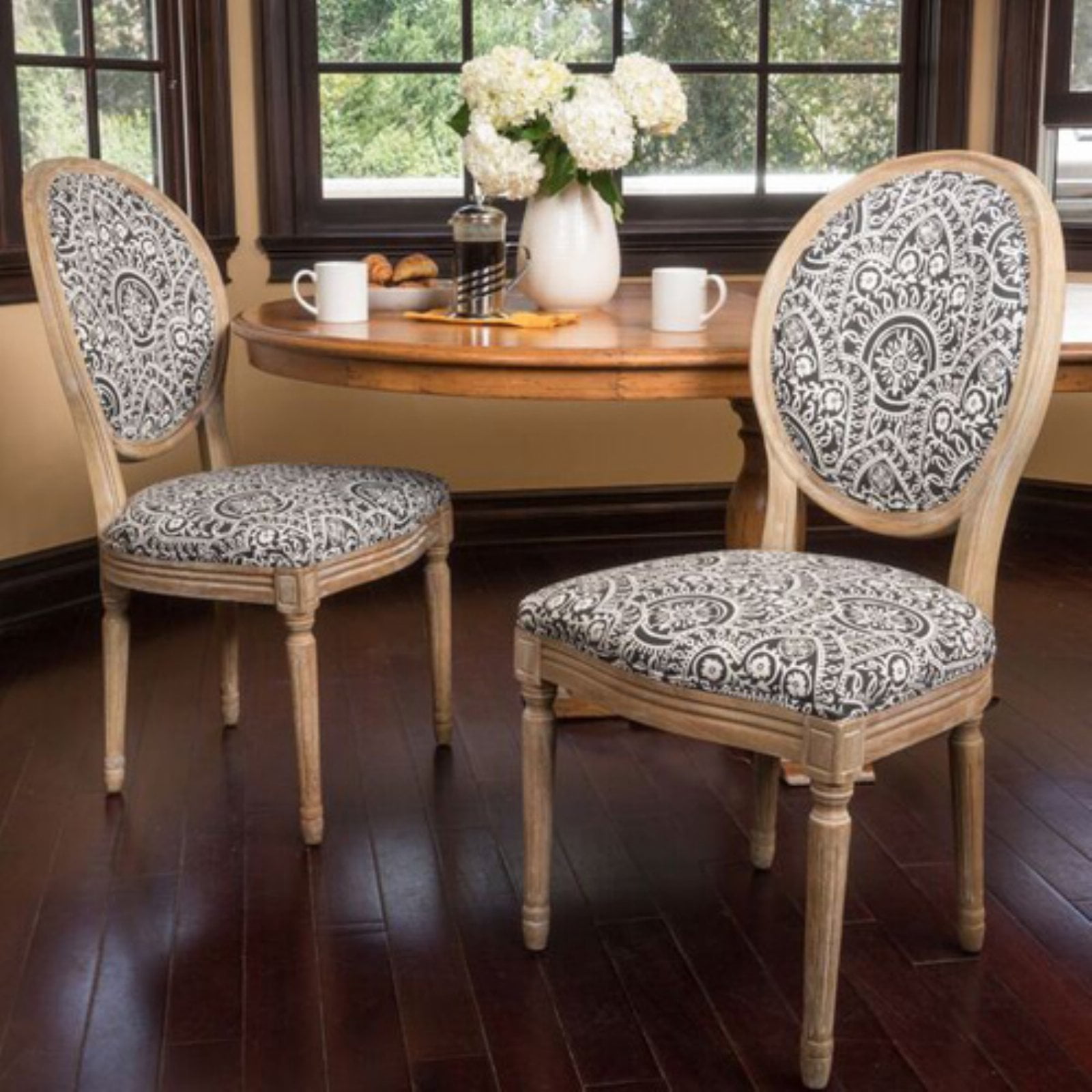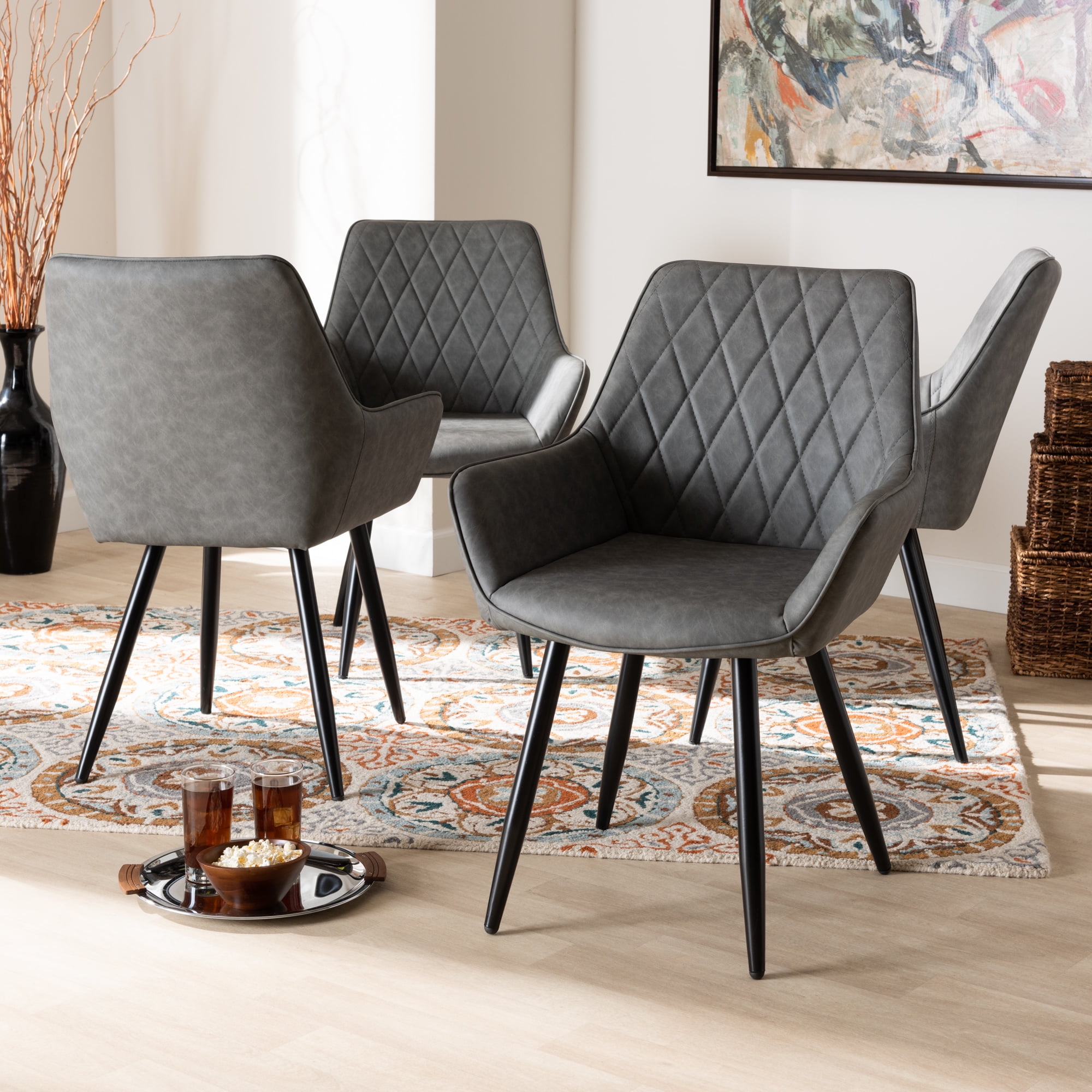Design & Aesthetics of Metal Upholstered Dining Chairs

Metal upholstered dining chairs offer a compelling blend of durability and style, encompassing a wide range of aesthetic choices. The interplay between the metal frame and the upholstery fabric significantly influences the overall design and visual impact of the chair. This section will explore the diverse styles, fabric choices, and design concepts within this category.
Styles and Frame Designs of Metal Upholstered Dining Chairs
The structural design of the metal frame plays a crucial role in defining the style of a metal upholstered dining chair. Variations range from minimalist, sleek lines to intricate, ornate detailing, each lending a distinct character to the piece. The choice of metal, such as steel, iron, or aluminum, further impacts the aesthetic, with each offering unique textural and visual properties.
| Style | Frame Material | Upholstery Type | Price Range |
|---|---|---|---|
| Mid-Century Modern | Sleek, tapered steel | Velvet, linen | $200 – $600 |
| Industrial | Rough-hewn iron, exposed welds | Leather, vinyl | $150 – $450 |
| Farmhouse | Blackened wrought iron, curved details | Linen, cotton | $250 – $700 |
| Contemporary | Powder-coated steel, geometric shapes | Faux leather, microfiber | $100 – $350 |
| Traditional | Ornate wrought iron, scrollwork | Velvet, brocade | $300 – $1000+ |
Impact of Upholstery Fabric Choices
The upholstery fabric significantly influences the chair’s texture, durability, and overall aesthetic appeal. Different fabrics project distinct visual and tactile qualities, shaping the chair’s personality and suitability for various interior design styles.
Velvet, for example, offers a luxurious feel and a rich, plush texture. Its deep pile creates a sense of opulence, lending itself well to more formal or traditional settings. However, velvet can be more prone to staining and requires more diligent maintenance compared to other fabrics. Linen, conversely, presents a more casual, relaxed aesthetic. Its natural fibers provide breathability and a slightly textured surface, ideal for farmhouse or minimalist styles. Linen is relatively durable but can wrinkle easily. Leather, known for its durability and timeless appeal, offers a sophisticated and classic look. Its smooth, supple texture ages gracefully, developing a unique patina over time. Leather is resistant to wear and tear but requires regular conditioning to maintain its suppleness and prevent cracking.
Metal Upholstered Dining Chair Design Concepts
Three distinct design concepts illustrate the versatility of metal upholstered dining chairs.
Metal upholstered dining chair – Concept 1: Mid-Century Modern
This concept features a sleek, tapered steel frame with a powder-coated finish in a muted gray or charcoal color. The upholstery is a mid-tone gray linen, emphasizing clean lines and understated elegance. The overall design is minimalist and functional, characteristic of mid-century modern aesthetics.
Concept 2: Industrial Chic
This design incorporates a robust, black iron frame with visible welds, highlighting the raw, industrial aesthetic. The upholstery is distressed brown leather, emphasizing the chair’s rugged character. The overall effect is a blend of industrial strength and refined elegance.
Concept 3: Farmhouse Charm
This concept uses a curved, wrought iron frame in a matte black finish. The upholstery is a creamy off-white linen with subtle texture. Delicate floral detailing on the upholstery adds a touch of femininity to the overall rustic charm. The overall design blends modern comfort with a touch of vintage appeal.
Manufacturing & Materials of Metal Upholstered Dining Chairs

The production of metal upholstered dining chairs involves a complex interplay of material science, manufacturing processes, and design considerations. The choice of metal, the welding techniques employed, and the upholstery attachment method all significantly impact the final product’s durability, aesthetics, and cost. Understanding these factors is crucial for optimizing the manufacturing process and delivering a high-quality chair.
Metal Type Comparison for Chair Frames
The selection of the metal for the chair frame is a critical initial step, influencing the chair’s weight, strength, cost, and overall aesthetic. Several metals are commonly used, each possessing distinct properties.
- Steel: Offers high strength and durability, making it suitable for chairs expected to withstand significant weight and wear. However, steel is relatively heavy and can be susceptible to rust if not properly treated with protective coatings like powder coating or galvanization. Cost is moderate.
- Iron: Similar to steel in strength but generally heavier and more prone to rust. Requires more robust protective coatings and often results in a more rustic aesthetic. Cost is generally lower than steel.
- Aluminum: A lightweight and corrosion-resistant option, offering a sleek, modern look. However, aluminum is less strong than steel or iron, making it less suitable for chairs that need to support exceptionally heavy loads. Cost is generally higher than steel or iron.
Manufacturing Process of a Metal Upholstered Dining Chair
The manufacturing process is a multi-stage operation requiring precision and efficiency. Each step contributes to the final product’s quality and functionality.
- Material Selection and Cutting: Choosing the appropriate metal (steel, iron, or aluminum) based on design requirements and budget. The metal is then cut into the required shapes using methods like laser cutting or stamping for high-volume production, or manual cutting for smaller batches.
- Welding: The cut metal pieces are joined together using welding techniques such as MIG (Metal Inert Gas) or TIG (Tungsten Inert Gas) welding. The quality of welding is crucial for structural integrity.
- Surface Finishing: To enhance corrosion resistance and aesthetics, the welded frame undergoes surface treatment. This may include powder coating, painting, or electroplating. Powder coating is a popular choice for its durability and wide range of color options.
- Upholstery Preparation: The chosen upholstery fabric (e.g., leather, vinyl, fabric) is cut and shaped to fit the chair seat and back. Foam padding is often added for comfort.
- Upholstery Attachment: The upholstery is attached to the metal frame using staples, tacks, or other fastening methods. Careful attention to detail is needed to ensure a neat and secure finish.
- Final Assembly and Quality Control: Any remaining components, such as legs or armrests, are attached. A rigorous quality control process is implemented to check for defects in welding, upholstery, and overall chair stability.
Manufacturing Challenges and Solutions
Several challenges can arise during the manufacturing process. Addressing these challenges is vital for producing high-quality, durable chairs.
- Welding Imperfections: Improper welding techniques can lead to weak joints and structural instability. Solutions include using skilled welders, employing appropriate welding parameters, and implementing thorough quality control checks using non-destructive testing methods such as visual inspection, dye penetrant testing, or ultrasonic testing.
- Upholstery Attachment Difficulties: Securing the upholstery firmly and evenly can be challenging. Solutions include using high-quality fastening tools, employing skilled upholsterers, and utilizing appropriate upholstery materials and techniques.
- Quality Control Issues: Maintaining consistent quality across large production runs can be difficult. Solutions include implementing rigorous quality control procedures at each stage of the manufacturing process, utilizing automated inspection systems where feasible, and providing adequate training to manufacturing personnel.
